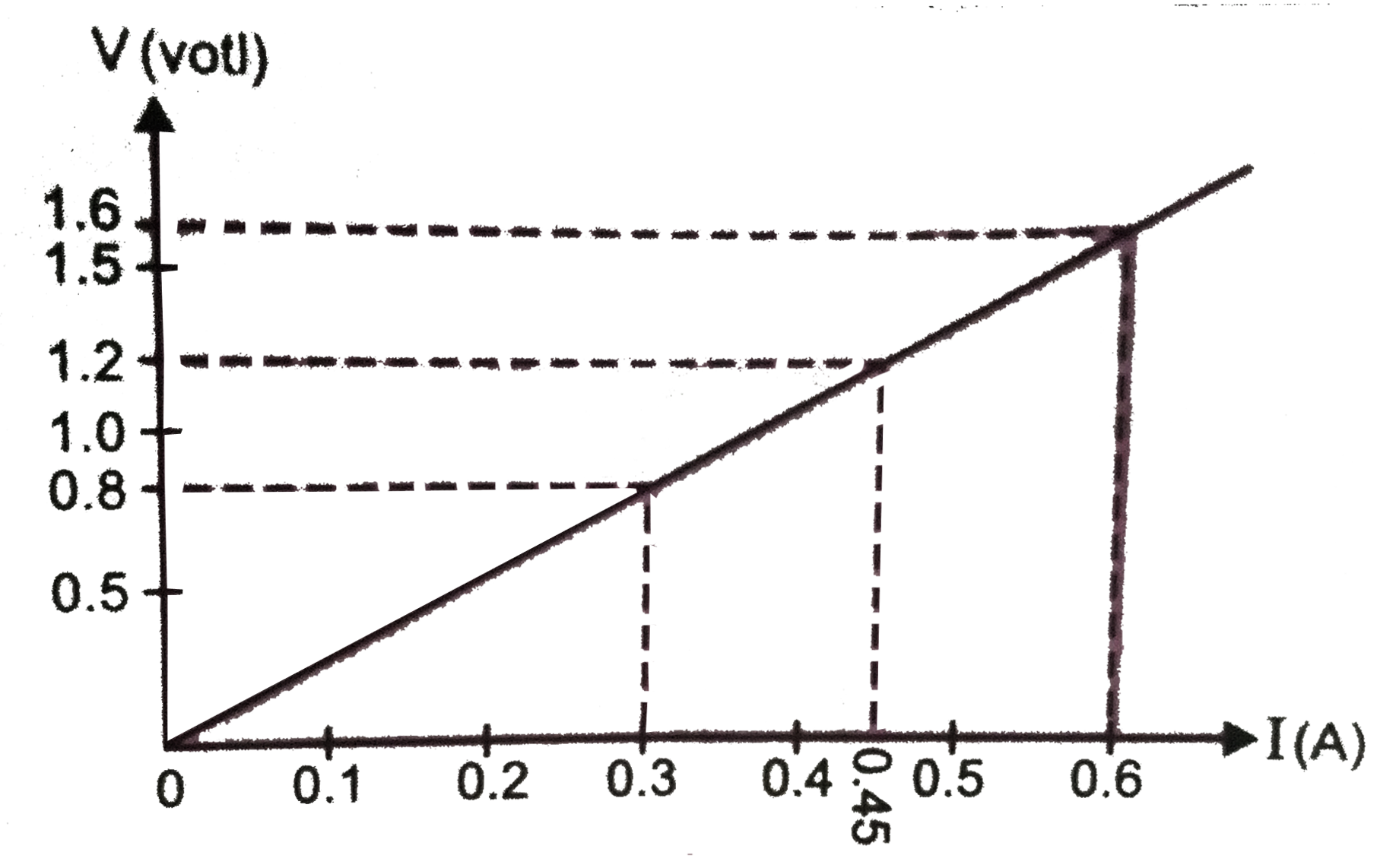(a) Name an instrument that measures electric current in a circuit. Define the unit of electric current.
(b) What do the following symbols represent in a circuit diagram?

(c) An electric circuit consisting of a 0.5 m long nichrome wire XY, an ammeter, a voltmeter, four cells of 1.5 V each and a plug key was set up.
(i) Draw the electric circuit diagram to study the relation between the potential difference maintained between the points 'X' and 'Y' and the electric current flowing through XY.
(ii) Following graph was plotted between Vand I values using above circuit:

What would be the values of ratios when the potential difference is 0.8 V, 1.2 V and 1.6 respectively? What conclusion do you draw from these values?
(a) An instrument that measures electric current in a circuit is called "ammeter".
The unit of electric current is ampere (A). I ampere is constituted by the flow of 1 coulomb of charge through any point in an electric circuit in 1 second.

(c) (i) 
(ii) Following graph was plotted between V and I values.

At potential difference 0.8V,
VI=0.80.3=83 ....(1)
At potential difference 1.2 V,
VI=1.20.45=83
At potential difference 1.6 V, VI=1.60.6=83
Conclusion: If I be the current through XY resistor and V be the potential difference across it, then the ratio VI=constant.
⇒V∝I and Ohm.s
Law is obeyed
Topper's Solved these Questions
- ELECTRICITYBOOK - VK GLOBAL PUBLICATIONCHAPTER - ELECTRICITYEXERCISE - NUMERICALS
2 Videos
- ELECTRICITYBOOK - VK GLOBAL PUBLICATIONCHAPTER - ELECTRICITYEXERCISE - NUMERICALS (RESISTANCE AND RESISTIVITY)
23 Videos
- ELECTRICITYBOOK - VK GLOBAL PUBLICATIONCHAPTER - ELECTRICITYEXERCISE - SHORT ANSWER QUESTION-II
8 Videos
- LIGHT-REFLECTION AND REFRACTIONBOOK - VK GLOBAL PUBLICATIONCHAPTER - LIGHT-REFLECTION AND REFRACTIONEXERCISE - PROFICIENCY EXERCISE (Long Answer Questions)
5 Videos
Similar Questions
(a) Name an instrument that measures electric current in a curcuit. Define the unit of eletric current.
(b) What do the following symbols, (Fig. 3.58) mean in a circuit diagram ?
( c) An electric circuit consisting of a 0.5m long nichrome wire XY, an ammeter, a voltmeter, four cells of 1.5V each and a plug key was set up.
(i) Draw a diagram of this electric circuit to study the relation between the potential difference maintained between the points 'X' and 'Y' and the electric current flowing through XY.
(ii) Graph shown in (Fig. 3.59) was plotted VandI values.
What would be the values of v/I ratios when the potential differences are 0.8V,1.2Vand1.6V respectively ? What conclusion do you draw from these values ?
 ,
,
 .
.
View SolutionName a instrument /device used to measure electric current in a circuit?
View Solution
Knowledge Check

The electric current I in the circuit shown isA6AB2AC3AD4AThe device used to measure electric current in a cir-cuit is called _____
AspeedometerBammeterCvoltmeterDkilowatt hour meter
Electric current is circuit is measure by:
View SolutionName the instrument used to measure the current in an electric circuit.
View Solution(a) The components of an electric circuit are 0.5 m long nichrome wire XY, an ammeter, a voltmeter, four cells of 1.5 V each, rheostat and a plug key. Draw a circuit diagram to study the relation between potential difference across the terminals X and Y of the wire and current flowing through it.
(b) State the law that relates potential difference across a conductor with the current flowing through it.
View Solution(a) What is an electric current? What makes an electric current flow in a wire?
(b) Define the unit of electric current (or Define ampere).
View SolutionName the instrument used to control current in an electric circuit.
View SolutionElectric Current||Electric Circuit
View Solution
